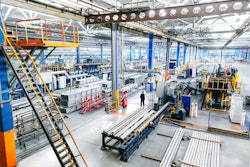
The automotive industry is slowly recovering from the ups and downs of the past few years.
COVID crippled U.S. auto sales in 2020, as CNBC noted in December 2020. Sales of new vehicles were expected to be down at least 15% compared with 2019 – the fourth-largest annual decline for U.S. sales since 1980. Then, in 2021 and 2022, computer chip shortages nearly halted the production of new cars, leading to skyrocketing prices for new and used vehicles.
A rebalance started at the end of 2022, and the future looks a bit brighter for the rest of 2023.
Supplyframe’s Commodity IQ insights reveal that, excluding memory devices, 85% of semiconductor pricing dimensions will be stable as we advance in the new year. The remainder will move in favor of buyers for the second half of 2023. Commodity IQ projects nearly 60% of lead time dimensions will decrease in the third quarter versus 1% in the third quarter of 2022.
With supply issues easing a little in 2023, and the rising supply of vehicles, we can expect to see less pressure on prices of older used cars. In addition, new vehicle markups and used vehicle wholesale prices have eased since their peaks in the spring of 2022. Falling prices are just starting to reach retail, but inflation-stretched used car shoppers may find some relief in 2023.
Electric vehicle (EV) adoption will also rise in 2023, but at a slightly slower pace than it has the last two years, according to Commodity IQ. Bloomberg says EV sales jumped from 3.2 million in 2020 to more than 10 million in 2022. And Commodity IQ data suggests plug-in EV passenger vehicle sales will reach 13.6 million this year, with three-quarters of the vehicles fully electric.
Why are we wishing for ‘normal’ to come back in the first place?
These ups and downs have some folks wishing for a return to what they consider normal.
But if you look under the hood, you will discover that the abundance of inexpensive inventory in the past couple of decades hid from view some massive problems in design and sourcing.
It’s akin to what happens in a drought. Given enough time, receding waters start to reveal what’s hidden underneath the surface. But, for the auto industry, instead of finding old shipwrecks and long-lost relics, the COVID pandemic exposed deeply flawed processes.
This new reality made it impossible for automakers to continue to disguise process inefficiencies that caused extra problems in a world in which supplies were scarce.
So, what is there to fix? It’s all about the processes!
Like many other industries, automotive manufacturers and suppliers today continue to follow many of the same processes that have been around for more than 100 years.
Design teams look toward the future, designing concepts that meet customer demands for more. Consumers expect manufacturers to deliver more efficiency, features and creature comforts, and support the shift to electric and hybrid vehicles, all at a competitive price.
Engineers and sourcing teams work to bring those new designs to life, while maintaining existing platforms. But each phase of the process – from design, to sourcing, to production – happens in a vacuum. When one team finishes its work, it hands off to the next group and so on. So, when the manufacturer runs into a part shortage, a component end-of-life issue, an excessive component cost increase or some other problem, it’s back to the drawing board.
That’s a massive problem that slows business and leads to lost sales, revenue and time.
Ups and downs will continue to arise
The past few months and years have come with a lot of problematic surprises.
And all signs point to a world with ongoing volatility, uncertainty, complexity and ambiguity.
It is likely that the relationship between China and the U.S. could deteriorate in the next few years. That could impact the availability of auto parts, including EV batteries. Many auto parts companies are electronic manufacturing service providers in Taiwan, which China claims.
Manufacturers should prepare for this possibility by considering forging new relationships with friendly countries so that they have access to critical inputs such as raw materials, semiconductors and advanced driver assistance systems (ADAS) technology.
The most significant development in the automotive sector, however, is EV battery market growth. This market should post strong growth in the coming years as EV adoption accelerates.
But there are concerns about a potential shortfall in the global mining capacity required to extract enough raw materials to manufacture enough batteries to meet projected demand in coming years. This is another indication that normal isn’t coming back.
Change is a constant – embrace it
Traditionally, manufacturers could focus on just 20% of their key suppliers and key costs. But now – because of the golden screw problem – you have to focus on 100% of those factors. Because it only takes one missing piece to slow down, or entirely halt, your production.
To ensure that you build resilience into your products and can scale production as needed despite any volatility, understand that you must look beyond just cost considerations. It is also high time that automakers and suppliers rethink how processes flow and teams interact.
Step away from the spreadsheets and static sources of information. Make decisions supported by real-time supply market intelligence to avoid surprises from an ever-shifting supply chain. And inject greater intelligence into your processes so that people across your organization have an always-on view of demand and supply trends. In doing so, your organization can connect the dots from design processes to sourcing to product lifecycle management; and you can make the right tradeoffs to design your products for resilience and avoid going back to the drawing board.
These critical steps will better position you for the new normal and revolutionize your company just as you have revolutionized the vehicles on which your business and your customers rely.















